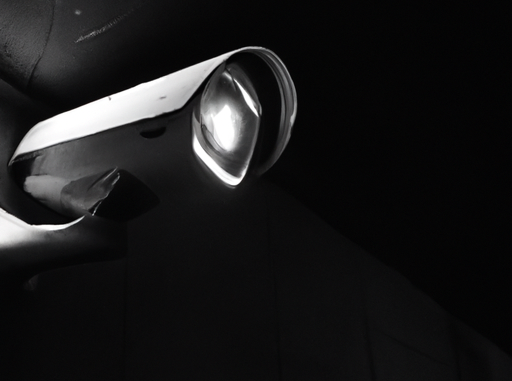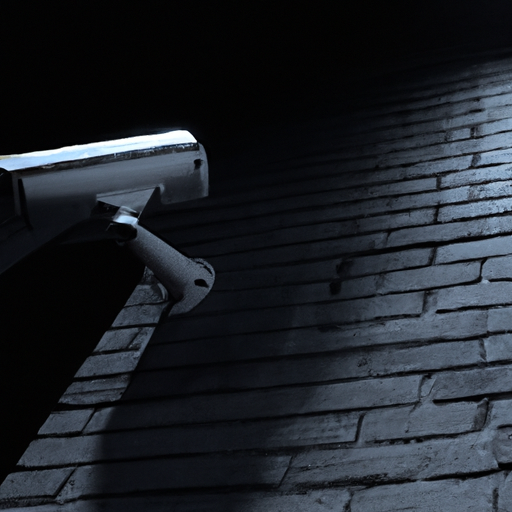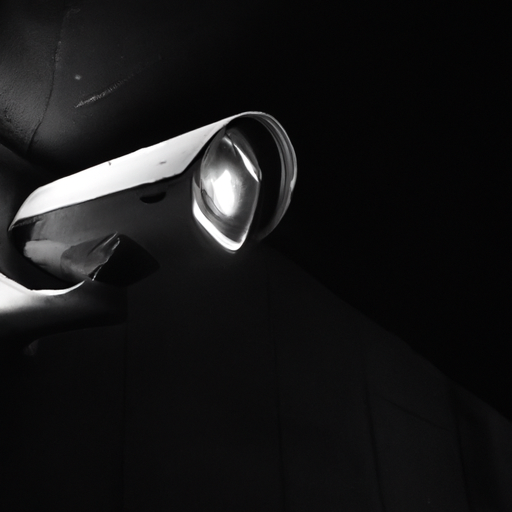
In this article, we will explore the typical storage duration for security camera recordings. You will learn about the factors that affect the length of storage, such as the type of camera and the purpose of the surveillance. We will also discuss the importance of storage duration in various settings, from homes to businesses. By the end of this article, you will have a better understanding of how long security camera recordings are usually kept.
This image is property of images.unsplash.com.
Factors Affecting Storage Duration
Camera Resolution and Image Quality
When it comes to security camera recordings, the camera resolution and image quality play a crucial role in determining the storage duration. Higher resolution cameras produce sharper and more detailed images, but at the cost of increased storage requirements. The better the image quality, the more storage space it will occupy.
To optimize storage, many security cameras use compression techniques such as H.264 or H.265. These techniques reduce the file size of the video without compromising too much on quality. However, it’s important to find a balance between image quality and storage capacity to ensure that the recorded footage is still clear and identifiable.
Storage Capacity
Determining required storage capacity
The storage capacity required for security camera recordings depends on several factors, including the number of cameras, the resolution and quality of the footage, and the desired retention period. To determine the required storage capacity, you need to consider the average amount of data each camera generates per day and multiply it by the number of cameras and the desired number of days you want to keep the recordings.
Factors affecting storage capacity
Apart from the factors mentioned above, other elements can affect the storage capacity required. These include the frames per second (FPS) at which the video is recorded, the duration of continuous recording, and the recording mode employed.
Balancing storage capacity and cost
One of the challenges in determining the storage capacity is finding the balance between the required storage and the associated costs. Higher storage capacity often means a higher investment in hardware and infrastructure. However, insufficient storage capacity may result in the loss or overwriting of critical footage. It’s important to strike the right balance to ensure cost-effectiveness while retaining the necessary amount of data.
Options for expanding storage capacity
If you find that your current storage capacity is insufficient, there are several ways to expand it. You can add more hard drives to your local storage system or invest in a Network Attached Storage (NAS) solution. Cloud-based storage is another option, allowing you to store your recordings on remote servers, eliminating the need for physical infrastructure expansion.
This image is property of images.unsplash.com.
Number of Cameras
Effects of the number of cameras on storage duration
The number of cameras you have in your surveillance system directly affects the storage duration. Simply put, the more cameras you have, the more data you will generate and the more storage capacity you will need. Therefore, it’s essential to consider the number of cameras when determining the required storage capacity.
Calculating storage needs based on camera count
To calculate the storage needs based on the number of cameras, you can either estimate the average storage space required per camera or use the manufacturer’s specifications. Multiply the average storage space by the number of cameras and the desired retention period to get the total storage capacity required.
Strategies to manage storage for multiple cameras
When managing storage for multiple cameras, it’s crucial to prioritize the cameras based on their importance or high-risk areas. For example, cameras in critical areas might require longer retention periods than those in less important locations. Additionally, intelligent storage management systems can automatically delete old recordings or recycle storage space to ensure new footage is always captured.
Recording Mode
Different recording modes can significantly influence the storage duration and capacity requirements of your security camera system. Let’s explore the major recording modes:
Continuous recording
Continuous recording means that the cameras are recording footage 24/7 without any breaks. This mode ensures that all activities are captured, but it also consumes a considerable amount of storage space. If you choose continuous recording, you need to have sufficient storage to accommodate the non-stop data flow.
Motion-based recording
Motion-based recording is triggered when there is motion detected within the surveillance area. This recording mode saves storage space by only capturing footage when there is activity. Motion detection algorithms ensure that minimal or no footage is recorded when there is no movement. However, it’s essential to set the motion detection sensitivity appropriately to avoid missing critical events.
Event-triggered recording
Event-triggered recording is similar to motion-based recording, but it is specifically triggered by pre-defined events such as alarms or specified inputs. Events can include door opening, glass breaking, or any other action that you want to capture with a higher level of detail. This mode is particularly useful for pinpointing specific incidents and conserving storage space.
Impact of recording mode on storage duration
Recording modes directly affect the storage duration. Continuous recording mode requires significantly more storage capacity compared to motion-based or event-triggered recording. By using intelligent recording modes, you can save storage space without sacrificing crucial footage. Carefully select the recording mode based on your specific security requirements and available storage capacity.
This image is property of images.unsplash.com.
Frames per Second (FPS)
Understanding frames per second
Frames per second (FPS) refers to the number of individual frames a camera captures per second to create a video. The higher the FPS, the smoother the video will appear. However, higher FPS also means greater storage requirements. Most security cameras offer FPS options, allowing you to adjust the frame rate depending on your needs.
Higher FPS and increased storage requirements
If you require smooth and detailed video playback, you might opt for a higher FPS. However, keep in mind that it will consume significantly more storage space. For example, a camera recording at 30 FPS will require twice as much storage capacity compared to one recording at 15 FPS. Consider the trade-off between video smoothness and storage impact when determining the desired FPS for your surveillance system.
Optimal FPS settings for different scenarios
The optimal FPS settings for your security camera system depend on the specific scenario and the level of motion typically captured. For most general surveillance purposes, a frame rate of 15 to 20 FPS is usually sufficient. However, for scenarios where there is high-speed movement or the need for detailed video analysis, a higher frame rate may be required. It’s essential to strike the right balance between video quality and storage capacity.
Storage Methods
When it comes to storing security camera recordings, you have several options to choose from, each with its advantages and disadvantages:
Local on-premises storage
Local on-premises storage refers to storing the video recordings on physical storage devices, such as hard drives connected to a Network Video Recorder (NVR) or a dedicated server. This method provides direct control over the storage system and eliminates reliance on external networks. However, it requires proper maintenance, backup protocols, and physical security measures.
Cloud-based storage
Cloud-based storage involves storing the video recordings in remote servers accessible over the internet. This method offers scalability, flexibility, and eliminates the need for physical infrastructure maintenance. However, it relies on a stable and reliable internet connection, and there may be ongoing subscription costs associated with storing large amounts of data.
Network Attached Storage (NAS)
Network Attached Storage (NAS) is a dedicated storage device connected to your surveillance system, functioning as a central data repository. NAS provides scalability, flexibility, and easy remote access to the stored footage. It can be expanded by adding additional hard drives or by connecting multiple NAS devices to create a larger storage pool.
Comparing storage options
The choice of storage method depends on various factors such as budget, security requirements, scalability, and ease of access. Local on-premises storage offers greater control and direct access but requires maintenance and physical security measures. Cloud-based storage provides flexibility and scalability but relies on an internet connection. NAS offers a balance between local control and remote access, making it suitable for various surveillance setups.

Retention Periods and Legal Requirements
Different retention periods for various industries
Different industries and organizations have different retention period requirements for their security camera recordings. While some may only need to keep recordings for a few weeks, others may require retention for several months or even years. It is essential to be aware of the specific retention period guidelines relevant to your industry and comply with them accordingly.
Legal regulations on video surveillance
Video surveillance is subject to various legal regulations and privacy laws, which vary from country to country. These regulations dictate how long you can keep recordings, how you can use them, and the security measures you must implement to protect them. It is crucial to stay up to date with the legal requirements and ensure compliance to avoid any legal issues.
Compliance with data protection laws
In addition to legal regulations, data protection laws also apply to security camera recordings. These laws define how personal data captured in the recordings should be handled, stored, and processed. As a responsible user of surveillance systems, it is essential to understand and comply with data protection laws to safeguard the privacy and rights of individuals.
Data Management and Storage Solutions
Automatic deletion and recycling of old recordings
To manage storage effectively, automatic deletion and recycling of old recordings can be implemented. By setting specific retention periods and using intelligent storage management systems, recorded footage can be automatically deleted once it reaches the predefined expiration date. This ensures that storage space is continually being recycled and new footage is maintained within the desired retention periods.
Data archiving strategies
For organizations that require long-term storage of recordings due to regulatory or internal requirements, implementing data archiving strategies is crucial. Archiving involves moving older, less frequently accessed footage to a separate storage system while still keeping it easily retrievable when needed. This approach helps manage storage capacity efficiently while still maintaining compliance.
Backup and redundancy measures
Data loss can occur due to various reasons, including hardware failure or human error. Implementing backup and redundancy measures is vital to protect valuable surveillance footage. Backing up recordings to separate storage devices or leveraging cloud-based backup services ensures that data is securely stored in multiple locations, minimizing the risk of permanent data loss.
Intelligent storage management systems
Intelligent storage management systems play a significant role in optimizing storage duration and capacity. These systems can automatically adjust video quality, frame rate, or compression settings based on various factors such as activity levels, available storage space, and designated retention periods. By intelligently managing storage, these systems ensure efficient utilization of resources while retaining high-quality and important footage.

Conclusion
Understanding how long security camera recordings are typically stored is crucial for effective surveillance system management. Factors such as camera resolution, storage capacity, number of cameras, recording mode, FPS settings, storage methods, and legal requirements all play a role in determining the storage duration. By considering these factors, finding the balance between image quality, storage capacity, and compliance becomes easier. Continuous advancements in storage technology provide opportunities for customized storage solutions that cater to specific needs. By staying up to date with the latest trends and incorporating intelligent storage management systems, organizations can optimize storage duration, minimize costs, and ensure the preservation and accessibility of valuable video recordings.


